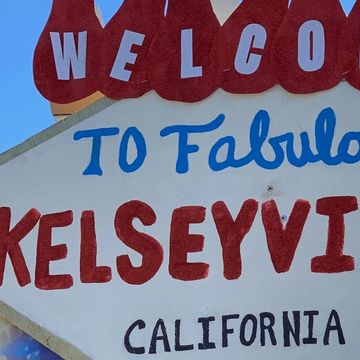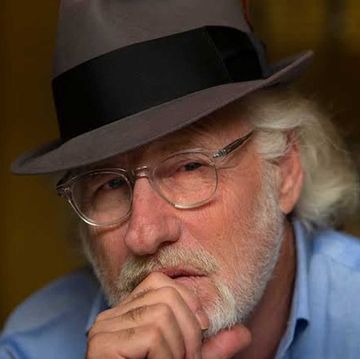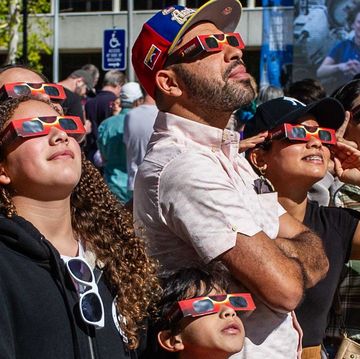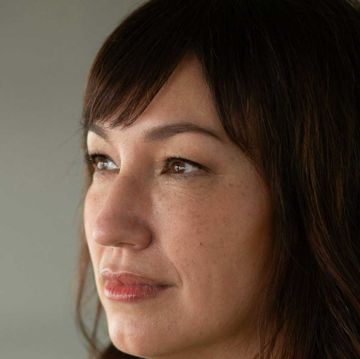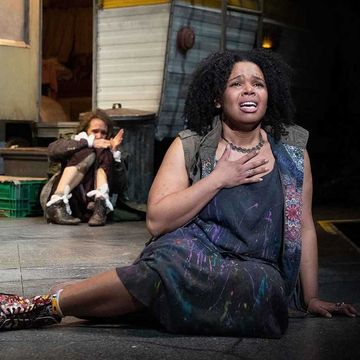In a 1975 television interview, the writer and filmmaker Nora Ephron observed that most of the men who covered wars had Hemingway complexes and tended to view it as “this great experience,” a view she did not share. “But also,” she added, “it is really harder to cover a war if you’re a woman.” Ephron, who had reported on the Yom Kippur War from Tel Aviv, had found herself in a distinct minority, and often in awkward situations—like trying to find a private place to pee.
At times, she was tempted to fall back on her feminine charms, not unlike one of her journalistic heroines, Marguerite Higgins. The legendary New York Herald Tribune reporter is the subject of a recent biography I wrote. Her frontline exploits during the Korean War became the inspiration for a never-developed screenplay of Ephron’s. Brash, beautiful, and ruthlessly competitive, Higgins earned a reputation for bravery bordering on recklessness and for, as a former colleague put it, “advanc[ing] on her back,” using her looks to unfair advantage, and trading sexual favors for everything from scoops to a lift to the front. Hers was the rare female byline from the battlefield, and she inevitably became a target of criticism by her male counterparts. But Maggie, as she was called by the GIs who loved her, was unrepentant: her attitude was that since it was not an even playing field, why should she play fair?
This article appears in Issue 26 of Alta Journal.
SUBSCRIBE
Did that make Higgins a feminist sinner or a badass, rule-breaking pioneer? The feisty Ephron was amused by the conundrum: “She was completely fearless. She was all of our basic nightmares—she did sleep with someone for a story.”
Higgins seduced a fellow print reporter, Keyes Beech, so he would share his jeep and help her cover the combat in Korea. In 1951, she became the first woman to win a Pulitzer Prize in International Reporting, for her dispatches from the front lines. (No woman would win in that category for another 30 years.) Higgins was far from perfect. She could be prickly, defensive, mean-spirited, and sometimes a little underhanded in her tactics. She did not particularly like other women and was not the least bit sisterly. A problematic heroine, then? “[She was] a difficult woman,” acknowledged Ephron, who was still trying to get the film made around the time of her death, in 2012. “That’s interesting.”
Now that #MeToo cases of misogyny have made headlines, the world is getting used to women who raise their voices, cause a ruckus, and are occasionally badly behaved in order to get things done in traditionally male-dominated professions. It’s been a long time coming. Today, more women than men major in journalism at UC Berkeley, Higgins’s alma mater, as well as many other universities around the country, and nearly as many women as men are covering conflict around the globe. The new generation has made sure that the term girl correspondent, Higgins’s claim to fame, will never again be an oxymoron. But while there are more opportunities, female reporters still have to guard against the type of gossip that damaged Higgins’s career, and a double standard still prevails.
“Look, transportation is important to reporters,” jokes Jane Ferguson, an intrepid Irish-British special correspondent for PBS NewsHour and contributor to the New Yorker. “If you’re going to have a sex life, and you are in a war zone, odds are that somewhere along the line, you will probably sleep with people with jeeps.” But that is not the same as sleeping with someone to get access to a story. Her point is that a male reporter can score a ride with a mate or meet a military official in a dimly lit bar for a debrief, and it will not raise eyebrows, but the appearance of impropriety is still a problem for women. “It’s a matter of perception,” she says, “and it can be tricky.”
Ferguson, who has spent years reporting from the Middle East, Africa, and, more recently, Ukraine, taught a journalism seminar at Princeton University. In the first class of the fall term, she assigned Higgins’s prizewinning dispatches from Korea, along with World War II stories by the acclaimed British reporter Clare Hollingworth, the first to report that Germany was preparing to invade Poland. As it happens, Hollingworth also had an affinity for men with their own wheels, and the diplomatic car she borrowed from the British consul general, with whom she had a brief fling, got her safely over the border with one of the biggest scoops in history.
In the lively discussion that followed, the class debated how far a reporter should go to get a story. Ferguson cited the journalistic rule of thumb: romancing a colleague might be OK, but bedding a source is a definite no-no. The current New York Times guidelines go one step further and instruct the paper’s staff to not “risk creating an appearance of coziness” with sources. Even regular golf outings and card games are discouraged. The idea is that mixing business with pleasure always leaves the reporter compromised, stamped with the scarlet letter of lost impartiality. (Apparently, Higgins and Hollingworth never got the memo.)
Ferguson didn’t want to further disillusion her class by pointing out that tolerating transactional affairs would just add to the already onerous demands and expectations female journalists have to contend with on a daily basis. But in her brutally honest new memoir, No Ordinary Assignment, she is candid about the epic sexism she encountered on her long, hard slog to the top. She takes aim at the television industry, which, for all its politically correct posturing, still places a premium on the attractiveness of female correspondents. Ferguson recounts how, as an earnest twentysomething freelance TV reporter in the late 2000s, she could not break into the industry, while better-looking, less-qualified candidates were being rewarded with swift promotions. Desperate to get hired, she asked a media consultant friend for advice. “Well,” he said, after taking a long gulp of beer, “you are no Lara Logan, that’s for sure,” a reference to the beautiful CBS reporter who rocketed to fame covering conflict in Afghanistan and was known for her tight T-shirts and flirtatious on-camera style.
His comment was not meant as an insult but as a warning: female correspondents had to go to the same dangerous regions and deliver the same exclusives as their male competitors, but they were also obliged to look “hot” in the live shot. “I was coming up in the period of the ‘war babes,’ ” recalls Ferguson, who had hoped to follow in the footsteps of her role models, Martha Gellhorn and Gertrude Bell, whom she had admired for their toughness, courage, and tenacity. She had never once stopped to wonder whether they were pretty. “Naïve, I know,” she says now. She admits in her book, “My looks had never entered my consciousness when it came to work. It hadn’t occurred to me to wear makeup, certainly not in war zones.”
Ferguson had covered everything from the Arab Spring to the Syrian civil war, Al Qaeda franchises, and the rise of ISIS. She spoke fluent Arabic and could film, produce, and edit her own stories. But the flak-jacketed correspondent had come up against the harsh reality of the media industry—the male gaze. The relentless criticism got to her, and she “internalized the rejection.” Eventually, she got a nose job, bought a blow-dryer, and learned how to achieve the cosmeticized ideal desired by the casting agents and news executives in New York. But she hated that she had to do it to get ahead.
While female war reporters are still sometimes hindered in the field—cultural biases persist, and Taliban commanders do not like dealing with Western women—most say that nothing compares to the challenge of navigating the sexual politics in their home office. Assigning editors hold enormous sway over the lives of the dozens of freelancers they employ, especially the ones they are attracted to. Parity has yet to be achieved in pay or opportunity. Denial of access to combat zones—Higgins was kicked out of Korea for being a woman and had to raise hell to return—is less of an obstacle, but men retain an unspoken advantage in that some of the most coveted foreign assignments are closely guarded by the boys’ club within most news organizations. According to the Women’s Media Center, male journalists have received the majority of the Pulitzer Prizes, and as of 2021, the same was true of all bylines and other credit in print, television, wire, and digital news. Similarly, the major Sunday news shows—influential, agenda-setting programs—feature two-thirds more guest appearances by male journalists, foreign policy experts, and opinion leaders, according to a 2020 report.
The growing number of women working across all media platforms belies the fact that war reporting “remains a very macho world,” says Janine di Giovanni, an award-winning journalist and author. Women have come a long way, she says, but not nearly far enough, “in part because the top editors are still mostly men.” Di Giovanni, who has covered almost every violent conflict since the late 1980s, recalls being ordered back to Iraq by her male boss at the Times of London six months after giving birth, only to walk into the Baghdad bureau just as the guys were taking odds on whether she would have the guts to report on the insurgents now that she was a mother. “Imagine how much more energy I could have brought to my work if I hadn’t had to constantly fight a rearguard action among my own colleagues,” she says, shaking her head. “It can wear you down and erode your confidence.”
Some inequities are easier to address than others. In her book Ghosts by Daylight: Love, War, Redemption, di Giovanni tackles the rarely discussed subject of the toll the profession exacts—the loneliness, depression, alcoholism, and post-traumatic stress disorder reporters struggle with because of the horrors they have witnessed. As her marriage to another war reporter crumbled, and as her composure cracked, she couldn’t help reflecting on how much more difficult it was for female war reporters to try to live a “normal life” than for men, who more often had the love and support of the families waiting for them back home. Di Giovanni’s nomadic existence, after so many years of dipping in and out of trouble spots, was “the opposite of cozy domesticity.” She did not have a role model, or any direction, for how to live her life when she came off the road, which was complicated by the added burden of trying to balance the double jobs of correspondent and wife and mother.
Di Giovanni says she loves hearing about valiant predecessors like Higgins, Hollingworth, and Gellhorn, whose male rivals regarded them as a “pain in the ass.” She loves what they stood for: “They lived alone and played alone and worked alone in a world that did not like women to do that.” Their example gives her hope. As former UC Berkeley student Ruby Sutton wrote in the student-run newspaper the Daily Californian, Maggie Higgins is celebrated for “ambition and persistence” and “remembered for overcoming biases toward female reporters.”
The recession has not been kind to anyone, especially women. Unceremonious layoffs at downsizing newspapers and networks have become the norm. Television news directors are axing older, knowledgeable female foreign reporters and replacing them with younger, cuter models who have little experience but cost less and look great on air. Add ageism to sexism on the growing list of industry sins. As Ferguson observes in her book, broadcast journalism careers are all too short nowadays, and the window of opportunity for female correspondents closes even more prematurely. A friend bluntly described the artificial deadline: “If a woman has not become a household name by the time she is 35 years old, she isn’t going to become one.” All the more reason to grab a jeep and go for the glory!
It will be interesting to see what battles the next generation of female reporters wage as they reach for the highest rungs of their careers. Now that millennials have tossed out the old rule book governing appropriate professional conduct, attire, and attitudes, introducing sexual agency and body positivity into the workplace, it seems anything goes. Many of today’s young television anchors, influencers, and internet personalities are not shy about flaunting their forms if it helps build their brands and further their goals. The new ethos is especially evident in the sports world, where the 21-year-old Louisiana State University gymnast Olivia Dunne has become the highest-earning female NCAA athlete in the country, owing in part to her more than 12 million followers across Instagram and TikTok, who seem to appreciate her viral beach selfies and Sports Illustrated swimsuit shoot. She and Angel Reese, the LSU Tigers’ stunning basketball star, both spotted marketing opportunities and are pursuing lucrative second careers as models to fund their dreams.
Some women who fought for equity and struggled to be taken seriously in predominantly male professions worry that the trend is regressive. While such shameless self-promotion may be unpalatable to them, though, Dunne insists that the new rules letting college athletes sign name, image, and likeness, or NIL, deals have been a game changer, allowing her to earn as much as male collegiate football players, who can rake in the cash thanks to their high-revenue sport. She has more than once taken the New York Times to task for printing scolding, old-school feminist criticism that she is no poster girl for progress. The newspaper even quoted Tara VanDerveer, Stanford’s winning women’s basketball coach, as telling the paper that the NIL revolution represents a “step back” by upholding old, sexist ideals of female beauty. Dunne, who did not like being kneecapped by the Times, countered that she is leveraging her popularity, pulling in seven figures, and proud of her social media savvy, thank you very much. “You can have the best of both worlds—and you can be a strong, independent woman while doing it all,” she asserted in an August 2023 video clip.
Depending on whom you ask, Dunne is either an empowering example or a catalyst for a whole new toxic culture of sexy media content. One thing is certain: she is breaking precedent and in the process changing the face of what is acceptable in collegiate sports, and perhaps in other arenas as well.
Much like Higgins before them, it is clear that women in this younger generation do not want to be told how they should look, what they can and cannot do, and whether to play up or down their sexuality. They are tired of hearing that their search for stardom is wily, manipulative, or a calculated use of their magnetic appeal, while the same behavior is condoned in their male peers. Instead of worrying about their credibility, they are exercising economic autonomy—they know how to attract a following online, reach a desirable demographic, and communicate their message, and they are not waiting to be packaged by the suits upstairs.
“People need to get over themselves about how they think women should behave,” says Mimi Swartz, the irreverent, astute senior executive editor of Texas Monthly. “It reminds me that the only limits, really, are those we put on ourselves.”
As an attractive, blond female trailblazer, Higgins took plenty of flak from her peers, but she never let it slow her down. She had a lot to say about her male-dominated profession and defined the characteristics that separated her from the pack. “First-rate war coverage, it seems to me, requires only two qualities,” she wrote. “They are a capacity for unusual physical endurance and the willingness to take unusual personal risk.”
Gender unspecified.•
Jennet Conant is the granddaughter of James B Conant, a former president of Harvard University and a key scientific adviser on the Manhattan Project who oversaw the development of the atomic bomb and its deployment against Japan and, along with Oppenheimer, later led the opposition to the development of the hydrogen bomb. She is the author of six books, including 109 East Palace: Robert Oppenheimer and the Secret City of Los Alamos. Her Fierce Ambition: The Life and Legend of War Correspondent Maggie Higgins will be published this fall.







